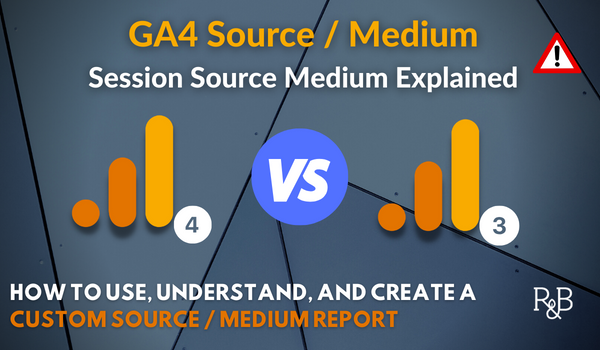Unlocking Secondary Dimensions in Google Analytics: Definition and Practical Use Cases Explored
Unlocking Secondary Dimensions in Google Analytics: Definition and Practical Use Cases Explored
Blog Article
Revealing the Effect of Second Dimension in Google Analytics on Information Analysis and Insights
In the realm of data analytics, the use of second measurements within Google Analytics has actually arised as a crucial tool for extracting deeper insights and unraveling complex patterns that may otherwise stay obscured. By peeling off back the layers of main information collections, second dimensions offer a nuanced viewpoint that enriches the understanding of customer actions, website performance, and the effectiveness of marketing techniques.
Checking Out the Concept of Secondary Measurements
Second measurements in Google Analytics give added understandings by enabling individuals to evaluate primary data along with a secondary attribute. This function enables a more complete understanding of the key information by including one more layer of information for analysis. By incorporating additional measurements, customers can dive deeper right into the data and discover beneficial connections that may otherwise go undetected. For instance, by coupling the key information of site web traffic with second dimensions like demographics or actions, marketers can obtain a much more comprehensive sight of their audience and customize their techniques accordingly.
By exploring the various second measurements available in Google Analytics, customers can unlock new understandings and maximize their electronic advertising and marketing initiatives. In essence, additional dimensions serve as an effective device for boosting data analysis and driving actionable outcomes.
Enhancing Information Analysis With Additional Dimensions
Having actually developed the foundational understanding of second measurements in Google Analytics and their essential role in data evaluation, the focus now changes in the direction of leveraging these second attributes to enhance the analysis of analytics data (what is a secondary dimension in google analytics). By integrating additional measurements right into information analysis, analysts can obtain deeper understandings into user actions, internet site efficiency, and advertising performance

In addition, additional measurements help in contextualizing primary information metrics by giving extra layers of information. This contextualization help in recognizing the 'why' behind the data trends, aiding analysts make informed decisions and optimizations to enhance overall efficiency. Eventually, incorporating secondary dimensions enriches the information analysis process, resulting in more purposeful insights and tactical activities.
Discovering Hidden Insights With Additional Dimensions
Exploring the midsts of analytics data with secondary dimensions exposes useful insights that would certainly or else continue to be covered. By integrating second dimensions in Google Analytics, organizations can uncover concealed patterns, patterns, and relationships that provide an even more extensive understanding of customer habits and internet site performance. These added layers of information allow experts to delve deeper right into the key dimensions, such as website traffic sources or landing web pages, and gain a more nuanced viewpoint on how various variables engage with each other.
Via the usage of additional dimensions, experts can section and contrast information throughout numerous measurements, allowing them to recognize specific variables that affect customer engagement, you can check here conversion prices, and general success metrics. For example, by matching the key dimension of 'tool category' with the second dimension of 'age,' online marketers can pinpoint which age demographics like accessing the website through mobile phones versus desktop computers. This level of granularity equips organizations to make data-driven choices and maximize their techniques for much better results. Inevitably, discovering concealed understandings through second measurements improves the depth and precision of information evaluation, bring about even more educated decision-making and enhanced performance outcomes.
Leveraging Second Measurements for Actionable Analytics
Structure upon the insights revealed via secondary measurements in Google Analytics, companies can now harness this enriched data landscape to drive actionable analytics and calculated decision-making. By leveraging second dimensions, organizations can dive much deeper right into their data to extract important patterns, trends, and connections that might have formerly gone unnoticed. This much deeper level of evaluation allows businesses to obtain a more comprehensive understanding of individual behavior, project efficiency, and total site efficiency.
One secret benefit of making use of secondary dimensions for workable analytics is the capacity to segment data based upon certain criteria. This segmentation permits businesses to tailor their campaigns and techniques to different target market teams, leading to much more targeted and efficient advertising and marketing efforts - what is a secondary dimension in google analytics. Furthermore, second dimensions supply an even more holistic view over here of individual communications, enabling companies to enhance their site material, layout, and total customer experience
Making Best Use Of Decision-Making With Secondary Dimensions
To enhance calculated decision-making in analytics, leveraging additional measurements in Google Analytics can give a more nuanced perspective on individual actions and project performance. By incorporating additional measurements right into information evaluation, businesses can delve deeper right into the specifics of their internet site visitors' communications and engagement patterns. This additional layer of information enables a more extensive understanding of exactly how different variables, such as demographics, gadgets, or web traffic resources, influence vital performance indicators.

Conclusion
To conclude, making use of additional measurements in Google Analytics plays an essential duty in improving information analysis and revealing covert understandings. By exploring this principle, one can get a much deeper understanding of user habits and make informed choices based on workable analytics. Leveraging second dimensions permits for a more thorough interpretation of data and maximizes the efficiency of decision-making processes.

Report this page